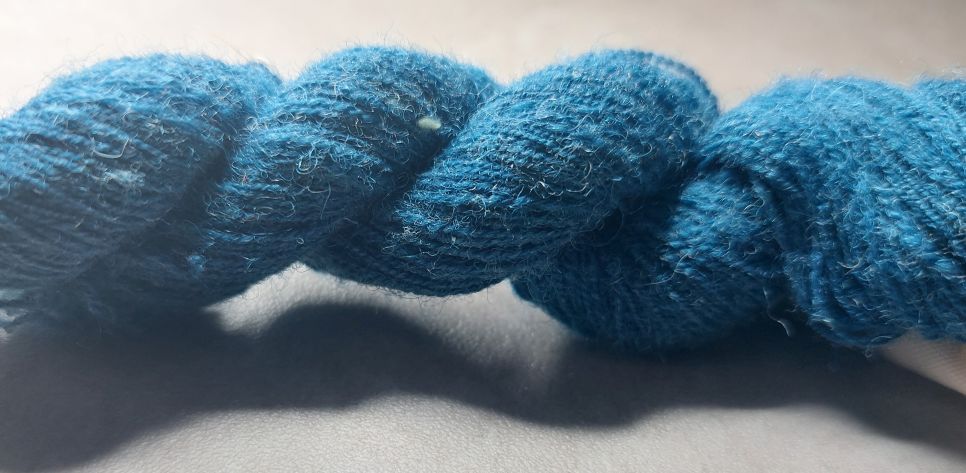I have looked for ways to improve my tablet weaving yarn.
1. The yarn needs to be as smooth as possible. I prefer longdraw, but yarn gets smoother with a drafting method that eliminates twist in the drafting zone.
That is well possible with a short forward draw, but as I use a spindle, there is only one hand available for drafting.
To use a distaff would free the fiber holding hand. That hand can then focus on drafting. But my pinching power is gone. Therefore I cannot pinch-fiddle fibers out of a distaff to form yarn.
But, when I turn my hand around, and hold the fiber supply with my thumb and index finger, I can draft by pushing with middle-and ringfinger, and use the little finger to press-smoothen the fibers.
Like this:

2. A yarn with more twist, is better abrasion resistant. So I upped the twist in the singles a bit, and also put more ply twist in.
3. For tablet-weaving, it works best if the plied yarn is not very twisty. Wet finishing can play a role in setting the twist.
For the tablet weaving yarn, I changed the way I wet finish the yarn. I make a firm skein, and slowly heat the yarn to almost boiling point and let it cool slowly down. With other yarn I would wash rather agressively, but for this yarn I just let it alone in the pot on the stove. When the pot has cooled down I just push the water out of the skein with a towel. When the yarn is dry, it is rather high twist but straight.
Below is a picture of the above yarn, dry, and wound in a ball, ready for the weaving of Band 4 out of Tablet Woven Treasures.

This is a post about weaving Finnish Iron Age bands with spindle spun weaving yarn. I weave the bands listed in the book ‘Tablet Woven Treasures, Archaeological Bands from the Finnish Iron Age’ by Karisto & Pasanen (2021), one by one in the order of the book.
